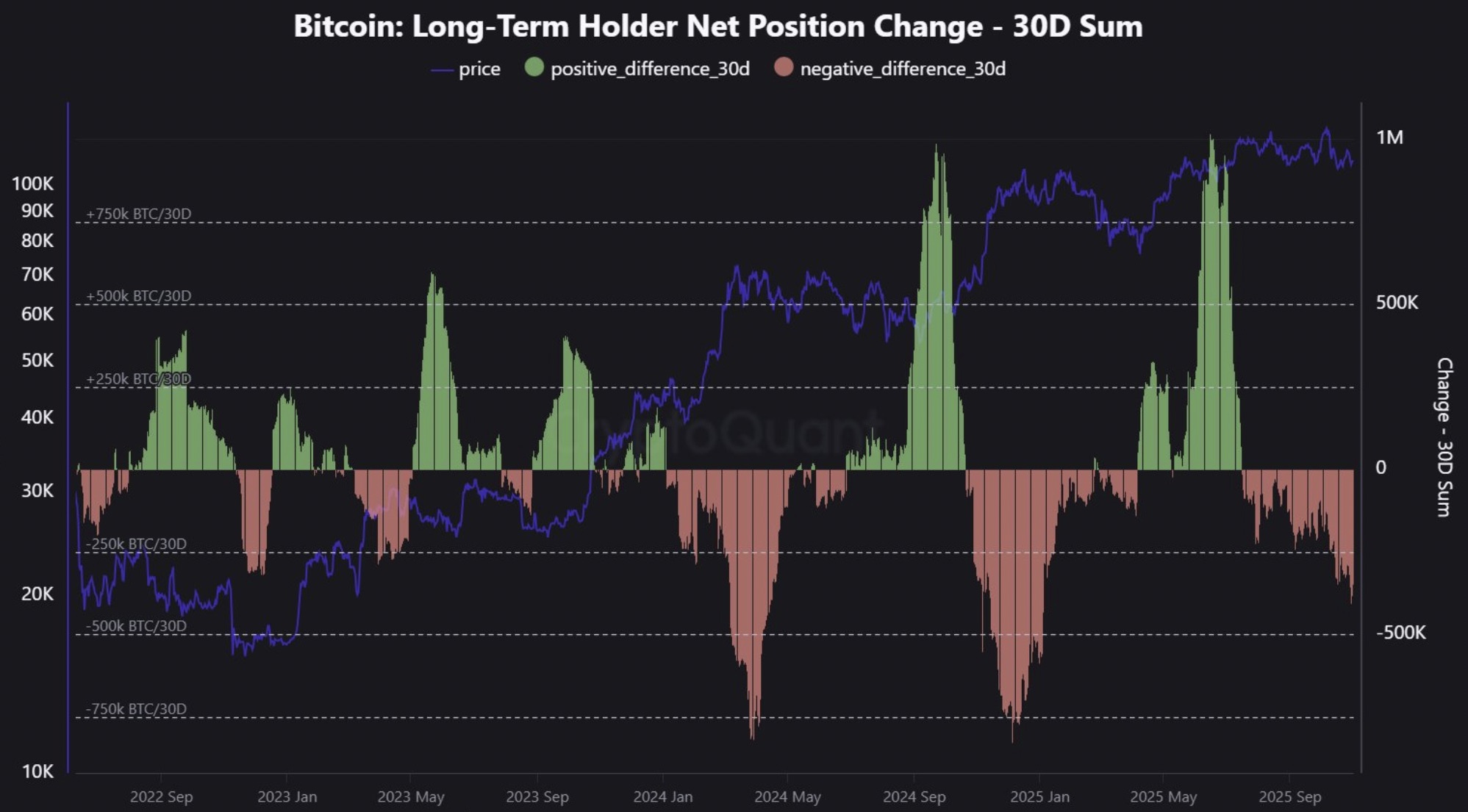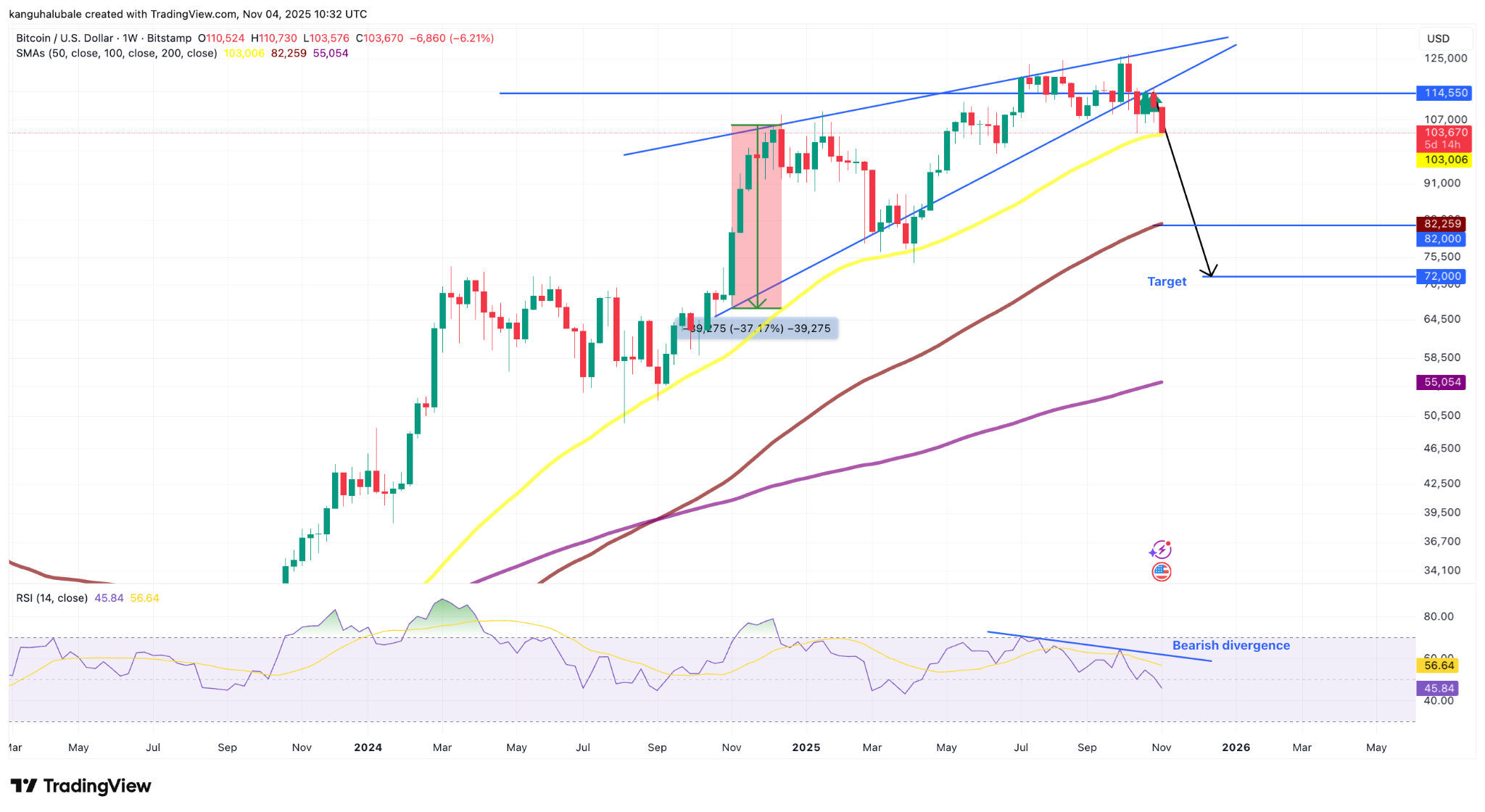
Key Insights:
- Long-term holders of Bitcoin have divested 400,000 BTC in the last 30 days.
- Short-term holders have panic-sold $3 billion in BTC at a loss.
- BTC’s recent rising wedge suggests a potential price target of $72,000; analysts warn it may decline as low as $60,000.
Bitcoin (BTC) experienced a decline exceeding 3.5% on Tuesday, trading at around $104,000. Overall, the cryptocurrency has seen losses of 8% for the week and 17% in the past month.
Sales by Long-Term Holders
Long-term holders, defined as those retaining their Bitcoin for at least six months, have been actively selling since Bitcoin reached record highs over $126,000 in early October. According to CryptoQuant analyst Maartunn, a net decrease of 405,000 BTC in the past month reflects an outflow valued at approximately $42.3 billion.
 Bitcoin 30-Day Supply Change
Bitcoin 30-day rolling supply change. Source: CryptoQuant
Bitcoin 30-Day Supply Change
Bitcoin 30-day rolling supply change. Source: CryptoQuant
This selling phase constitutes nearly 2% of Bitcoin’s total supply, highlighting a significant distribution.
TFTC’s founder, Marty Bent, noted the market’s resilience in absorbing this level of sell pressure without catastrophic price drops.
Short-term investors, categorized as having weaker hands, have also reacted to market volatility, sending over 26,800 BTC (around $3 billion) to exchanges, primarily at a loss, in recent days.
Market Predictions
The BTC/USD price chart is showing a falling wedge pattern, indicating a risk of breaching critical support levels, including the 50-week SMA at approximately $103,300. A close below these levels may open the path for a price drop towards the wedge target of $72,000, a decrease of about 30% from current valuations.
 BTC/USD Weekly Chart
BTC/USD Weekly Price Chart. Source: Cointelegraph/
TradingView
BTC/USD Weekly Chart
BTC/USD Weekly Price Chart. Source: Cointelegraph/
TradingView
Brandt has suggested Bitcoin might bottom out around the $60,000 mark. Market sentiment has notably shifted to an extreme fear level of 21 as BTC trades below $104,000, with increasing speculation of a price dip under $100,000.
This article does not serve as investment advice. It includes inherent risks, and readers are encouraged to perform thorough research before making any investment decisions.



